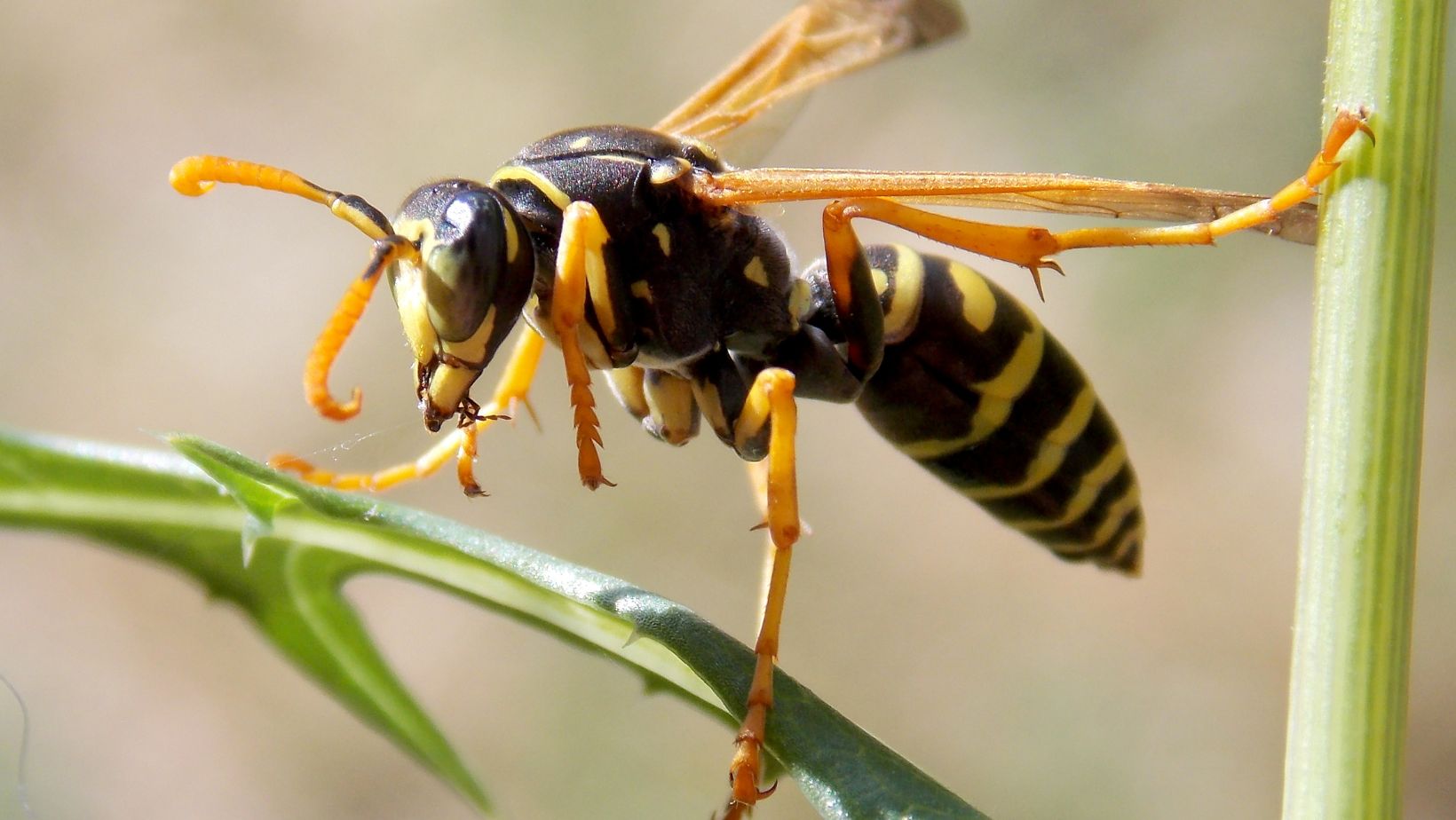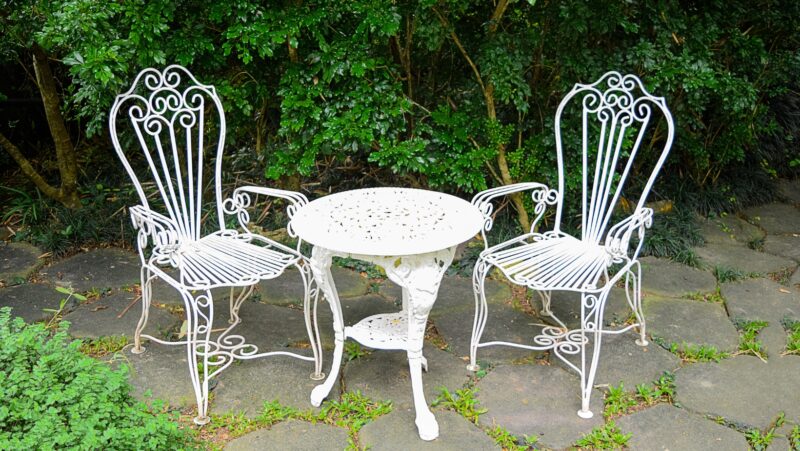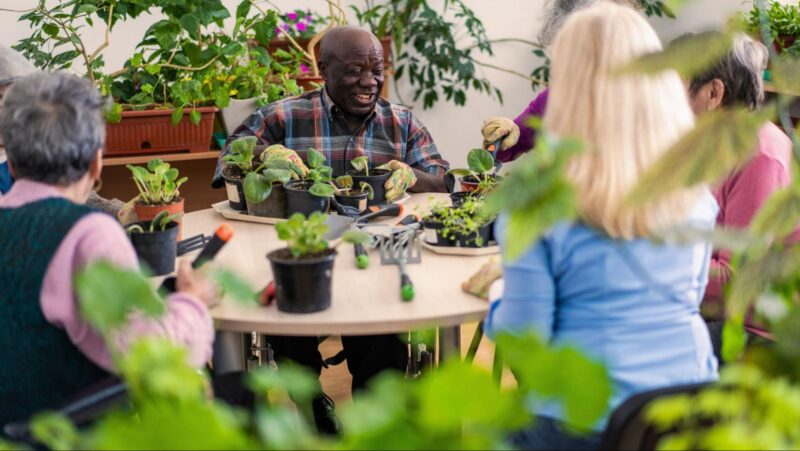
Wasps are fascinating creatures, but their presence can be a nuisance, especially when they build wasp nests near your patio or outdoor dining area. Their stings are painful, and their buzzing can be disruptive.
If you’re finding yourself swatting at wasps more than enjoying your garden, don’t despair. This step-by-step guide will equip you with the knowledge and strategies to take control of the situation.
Identify the Problem
First things first: are you actually dealing with wasps? Wasps have a slender body with a narrow waist, unlike bees that have a rounder, fuzzier appearance. Wasps also tend to be more aggressive around food and drinks.
If you see a paper wasp nest hanging from a tree branch or hidden under your eaves, then you’ve definitely got a wasp problem.
Don’t Panic, But Do Take Action
While a wasp sting is certainly unpleasant, it’s rarely life-threatening for healthy adults. However, multiple stings or stings to someone allergic can be serious. So, while there’s no need to panic, it’s important to address the wasp issue to prevent them from becoming a safety hazard or a constant annoyance.
Prevention is Key
The best way to deal with wasps is to prevent them from setting up shop in your garden in the first place. Here’s how:
- Minimize Food and Drink Attractions: Wasps are drawn to sugary drinks and leftover food scraps. Keep your outdoor eating areas clean, and dispose of food waste properly in sealed bins. Don’t leave open cans of soda or juice unattended.
- Seal Up Potential Nesting Sites: Wasps love building nests in sheltered areas like under eaves, sheds, or attics. Regularly inspect these spots and seal any potential entry points with caulk or wire mesh.
- Attract Natural Predators: Encourage birds like swallows and bluebirds to nest in your garden. These birds love to snack on wasps, keeping their population in check naturally.
Dealing With an Existing Nest
If you’ve already discovered a wasp nest, tackling it yourself can be risky. Wasps are fiercely protective of their homes, and disturbing a nest can lead to a swarm attack.
For wasp control in London or nearby, consider hiring a professional pest control company. They have the experience, equipment, and protective gear to safely remove the nest and eliminate the wasp colony.
DIY Wasp Nest Removal (For the Brave!)
If you’re feeling particularly bold and want to tackle the nest yourself, proceed with extreme caution. Here’s how:
- Safety First: Gear up properly. Wear long sleeves, pants, gloves, and a protective face mask. Choose a calm evening when wasp activity is low.
- Choose Your Weapon: Insecticide sprays specifically designed for wasps are widely available. Alternatively, you can try a homemade wasp trap – a mixture of sugar water and dish soap in a jar.
- Attack at Dawn: Wasps are less active in the early morning hours. Wait until dawn, then spray the nest directly with the insecticide following the product instructions precisely.
- Retreat and Monitor: After spraying, retreat to a safe distance and leave the nest undisturbed for 24 hours. If wasp activity persists, repeat the treatment.
DIY wasp removal is risky and not recommended for everyone. If you’re uncomfortable with the process, err on the side of caution and call a professional.
Keeping Your Garden Wasp-Free
Once you’ve dealt with the immediate wasp problem, take steps to prevent future infestations. Here are some additional tips:
- Keep Trash Cans Sealed: Tightly sealed trash cans prevent wasps from being attracted to food scraps.
- Grow Wasp-Repellent Plants: Certain plants like citronella, peppermint oil, and clove geranium have natural properties that repel wasps. Consider incorporating these into your garden design.
- Minimize Outdoor Lighting at Night: Wasps are attracted to light. Keep your outdoor lighting to a minimum, especially at night.
Understanding Wasp Species
There are many different wasp species, each with its own behavior and nesting habits. Here’s a quick breakdown:
- Social Wasps vs. Solitary Wasps: Social wasps, like yellow jackets and paper wasps, live in colonies with a queen and worker wasps. Solitary wasps, like cicada killer wasps and mud daubers, live alone and build individual nests.
- Paper Wasps: These beneficial insects build open-faced paper wasp nests, often under eaves or on tree branches. While they can sting, they’re generally less aggressive than yellow jackets.
- Yellow Jackets: These social wasps are known for their aggressive behavior and their painful stings. They build their nests underground in burrows or within hollowed-out trees. Unlike paper wasp nests, yellow jacket nests are hidden and can be difficult to locate.
When to Call a Professional
While some wasp species, like braconid wasps, are actually beneficial insects that help control pest populations, others like yellow jackets can be a real nuisance and a safety hazard. Here are some situations where calling a professional pest control company is the best course of action:
- Large or Hidden Wasp Nests: If you’ve discovered a large wasp nest, especially if it’s located in a difficult-to-reach area like a wall cavity or inside your attic, leave it to the professionals. They have the tools and expertise to safely remove the nest and eliminate the colony.
- Allergy Concerns: If you or someone in your household is allergic to wasp stings, it’s important to avoid any potential contact with wasps. Don’t attempt to remove a wasp nest yourself. Call a professional to handle the situation safely.
Final Thoughts
So, enjoy your garden! Breathe easy, listen to the birds, and watch the butterflies flutter by. But if you see a wasp nest taking shape, don’t fret. Grab your phone and call a professional. Remember, a peaceful summer evening is just a call away.













